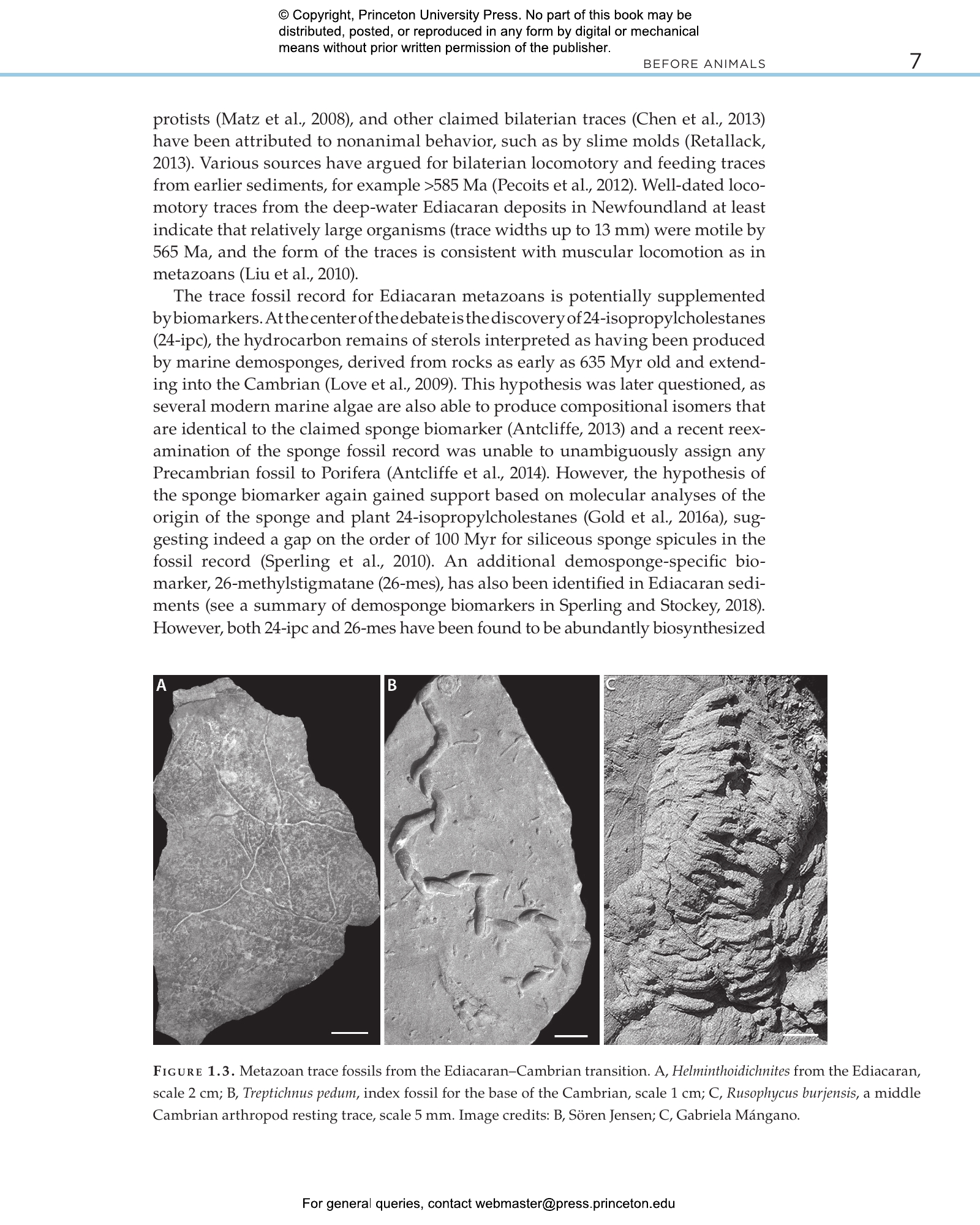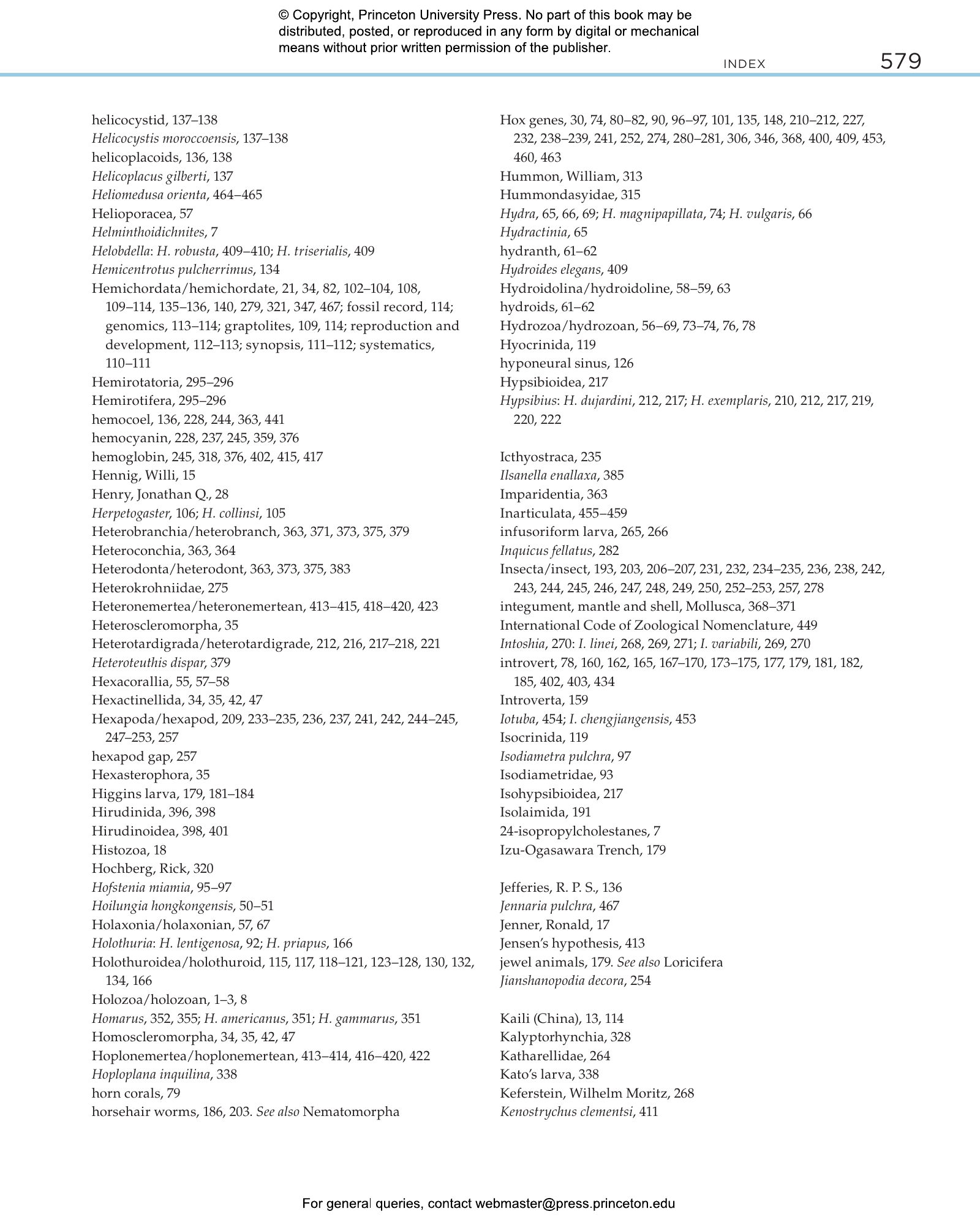In The Invertebrate Tree of Life, Gonzalo Giribet and Gregory Edgecombe, leading authorities on invertebrate biology and paleontology, utilize phylogenetics to trace the evolution of animals from their origins in the Proterozoic to today. Phylogenetic relationships between and within the major animal groups are based on the latest molecular analyses, which are increasingly genomic in scale and draw on the soundest methods of tree reconstruction.
Giribet and Edgecombe evaluate the evolution of animal organ systems, exploring how current debates about phylogenetic relationships affect the ways in which aspects of invertebrate nervous systems, reproductive biology, and other key features are inferred to have developed. The authors review the systematics, natural history, anatomy, development, and fossil records of all major animal groups, employing seminal historical works and cutting-edge research in evolutionary developmental biology, genomics, and advanced imaging techniques. Overall, they provide a synthetic treatment of all animal phyla and discuss their relationships via an integrative approach to invertebrate systematics, anatomy, paleontology, and genomics.
With numerous detailed illustrations and phylogenetic trees, The Invertebrate Tree of Life is a must-have reference for biologists and anyone interested in invertebrates, and will be an ideal text for courses in invertebrate biology.
- A must-have and up-to-date book on invertebrate biology
- Ideal as both a textbook and reference
- Suitable for courses in invertebrate biology
- Richly illustrated with black-and-white and color images and abundant tree diagrams
- Written by authorities on invertebrate evolution and phylogeny
- Factors in the latest understanding of animal genomics and original fossil material
Gonzalo Giribet is Alexander Agassiz Professor of Zoology in the Museum of Comparative Zoology and professor of organismic and evolutionary biology at Harvard University. He is the coeditor of Techniques in Molecular Systematics and Evolution. Twitter @ggiribet Gregory D. Edgecombe is Merit Researcher at the Natural History Museum, London. He is the editor of Arthropod Fossils and Phylogeny.
- Preface and Notes
- 础肠办苍辞飞濒颅别诲驳尘别苍迟蝉
- 1. Before Animals
- 2. Phyloge颅ne颅tics and the Base of the Animal Tree of Life
- 3. Ctenophora
- 4. Porifera
- 5. Planulozoa
- 6. Placozoa + Cnidaria clade
- 7. Placozoa
- 8. Cnidaria
- 9. Bilateria
- 10. Xenacoelomorpha
- 11. Xenoturbellida
- 12. Acoelomorpha
- 13. Nephrozoa
- 14. Deuterostomia
- 15. Ambulacraria
- 16. Hemichordata
- 17. Echinodermata
- 18. Chordata
- 19. Protostomia
- 20. Ecdysozoa
- 21. Scalidophora
- 22. Priapulida
- 23. Kinorhyncha
- 24. Loricifera
- 25. Nematoida
- 26. Nematoda
- 27. Nematomorpha
- 28. Panarthropoda
- 29. Tardigrada
- 30. Onychophora
- 31. Arthropoda
- 32. Spiralia
- 33. Dicyemida (= Rhombozoa)
- 34. Orthonectida
- 35. Chaetognatha
- 36. Gnathifera
- 37. Micrognathozoa
- 38. Gnathostomulida
- 39. Rotifera
- 40. Platytrochozoa
- 41. Rouphozoa
- 42. Gastrotricha
- 43. Platyhelminthes
- 44. Lophotrochozoa
- 45. Cycliophora
- 46. Mollusca
- 47. Annelida
- 48. Nemertea
- 49. Lophophorata
- 50. Bryozoa
- 51. Entoprocta
- 52. Brachiozoa
- 53. Phoronida
- 54. Brachiopoda
- 55. Problematica
- Bibliography
- Index
"The Invertebrate Tree of Life is an invaluable work for anyone entering or already working in the field of invertebrate evolution, taxonomy, and phylogenetics. By unlocking and reviewing a huge body of literature, identifying knowledge gaps, and providing a balanced overview of both current consensus views and disagreements, Giribet and Edgecombe provide an incredibly useful community service, making this work a benchmark for the future."鈥擫eon Vlieger, Inquisitive Biologist
"[For] true researchers, it is an amazing synthesis likely to serve as a landmark reference for years."鈥擲.R. Fegley, Choice
"[An] essential resource for academics as well as their students."鈥擠ouglas H. Erwin, The Quarterly Review of Biology
"[A] highly welcome modern book with a refreshing outlook on a classic subject, that will prove extremely useful to zoologists around the world."鈥擳homas Stach, Journal of Zoological Systematics and Evolutionary Research
"The book provides a wonderful work of synthesis of classic and most recent analyses, incorporating genomic data and the new technologies that led to modern phylogenomics, exploring current debates and contrasting previous phylogenetic hypotheses."鈥擩uan J. Morrone, Frontiers of Biogeography
"[The Invertebrate Tree of Life] is in all respects a work of great scholarship, a masterpiece of science, a book for its time."鈥擠avid Gascoigne, Travels with Birds
"The enthusiasm of the authors for their subject translates well onto paper. . . . this book represents a useful and timely contribution to the field of invertebrate evolution and taxonomy."鈥擯. Buckley, The Malacologist
"Synthesizing morphological, molecular, geological, ecological, and other data sources, this outstanding book makes a unique contribution to research and education in invertebrate zoology. With its exceptional scholarship, it will have a well-worn presence on the desks of invertebrate biologists the world over and become an inseparable component of undergraduate and graduate courses."鈥擶ard Wheeler, American Museum of Natural History
"An astounding synthesis of a field that has grown at an exponential rate, The Invertebrate Tree of Life provides an overview of the biology of invertebrate animals from a deep evolutionary context. Its thoughtful, interpretive coverage of morphology, molecular genetics, and the fossil record represents an achievement of incredible magnitude."鈥擵icki Buchsbaum Pearse, coauthor of Animals without Backbones and Living Invertebrates and founding editor of Invertebrate Biology
"A great book鈥攐ne of the best I鈥檝e read this century."鈥擱einhardt M酶bjerg Kristensen, Natural History Museum of Denmark





































